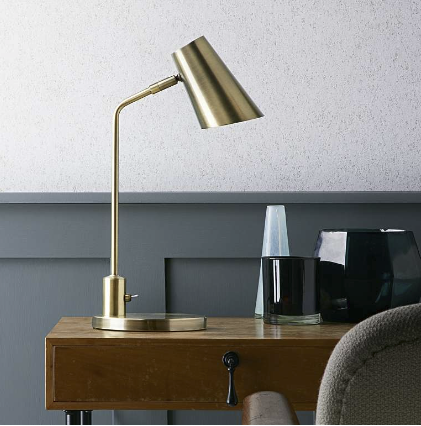In the realm of productivity, the significance of proper lighting cannot be overstated. A well-lit environment not only enhances visibility but also plays a crucial role in influencing mood and focus. Studies have shown that inadequate lighting can lead to eye strain, fatigue, and even headaches, which can severely hinder one’s ability to concentrate on tasks.
Conversely, a well-lit workspace can invigorate the mind, making it easier to engage with complex materials and sustain attention over extended periods. The right lighting can create an atmosphere that fosters creativity and motivation, allowing individuals to immerse themselves in their work without the distractions that poor illumination can bring. Moreover, the psychological effects of lighting extend beyond mere visibility.
Natural light, for instance, has been linked to improved mood and overall well-being, while artificial lighting Nepten can either enhance or detract from this experience depending on its quality and placement. A workspace that is too dim may induce feelings of lethargy, while overly bright lights can lead to discomfort and irritability. Therefore, understanding the importance of proper lighting is essential for anyone looking to optimize their productivity.
By investing time and resources into creating a well-lit environment, individuals can significantly enhance their ability to focus, think critically, and produce high-quality work.
Features to Look for in a Study Desk Lamp
Adjustability and Flexibility
A lamp that can be tilted or rotated is essential, allowing for greater flexibility in directing light exactly where it is needed. This feature is particularly beneficial for those who may be working on different tasks that require varying levels of illumination.
Customizable Brightness and Color Temperature
Brightness settings are also crucial, as lamps with multiple brightness levels enable users to customize their lighting based on the time of day or the nature of the task at hand. This adaptability not only enhances comfort but also helps in reducing eye strain during prolonged study sessions. Furthermore, the color temperature of a lamp can significantly affect the ambiance of a workspace and influence productivity levels. Lamps that offer adjustable color temperatures allow users to switch between warm and cool light, catering to different activities and personal preferences.
Energy Efficiency and Sustainability
Lastly, energy efficiency should not be overlooked. Opting for LED lamps not only reduces electricity costs but also contributes to a more sustainable environment. By carefully evaluating these features, individuals can select a study desk lamp that not only illuminates their workspace effectively but also enhances their overall productivity.
How to Position Your Study Desk Lamp for Maximum Effectiveness
The positioning of your study desk lamp is just as crucial as its features in determining its effectiveness. Ideally, the lamp should be placed in such a way that it minimizes shadows on your workspace while providing ample light for reading or writing. For right-handed individuals, placing the lamp on the left side of the desk is often recommended, as this allows for optimal illumination without casting shadows over the work area.
Conversely, left-handed individuals may find it more beneficial to position the lamp on the right side. This simple adjustment can make a significant difference in comfort and efficiency during study sessions. In addition to side placement, the height of the lamp should also be considered.
A lamp that is too low may create glare on surfaces or obstruct your line of sight, while one that is too high may not provide sufficient light where it is needed most. Ideally, the light source should be at eye level or slightly above, allowing for an even distribution of light across the workspace. Furthermore, it’s important to consider the surrounding environment; if your desk is near a window, you may want to adjust your lamp’s position based on the time of day and the amount of natural light available.
By thoughtfully positioning your study desk lamp, you can create an optimal lighting setup that enhances focus and productivity.
The Best Types of Bulbs for Study Desk Lamps
Choosing the right type of bulb for your study desk lamp is essential for achieving the desired lighting effect and maximizing productivity. LED bulbs have gained popularity in recent years due to their energy efficiency and long lifespan. They emit less heat compared to traditional incandescent bulbs, making them a safer option for prolonged use in close proximity to work materials.
Additionally, LED bulbs are available in various color temperatures, allowing users to select the perfect hue for their specific needs—whether they prefer a warm glow for relaxation or a cooler tone for heightened alertness. Another option worth considering is compact fluorescent lamps (CFLs), which are also energy-efficient and have a longer lifespan than incandescent bulbs. However, they may take some time to reach full brightness and can sometimes produce a flickering effect that may be distracting during study sessions.
Halogen bulbs are another alternative; they provide bright, white light that closely resembles natural daylight, making them ideal for tasks requiring precision and detail. However, they tend to generate more heat and consume more energy than LEDs or CFLs. Ultimately, selecting the best type of bulb involves weighing factors such as energy efficiency, brightness levels, and personal preferences regarding color temperature.
Tips for Choosing the Right Study Desk Lamp for Your Needs
When it comes to choosing the right study desk lamp, it’s essential to assess your individual needs and preferences carefully. Start by considering the primary activities you will be engaging in at your desk—whether it’s reading, writing, or working on a computer—as this will help determine the type of lighting required. For instance, if you primarily read printed materials, you may benefit from a lamp with adjustable brightness settings and a focused beam to reduce glare on pages.
On the other hand, if you spend most of your time typing or working on digital devices, a lamp with softer light may be more suitable to minimize eye strain. Additionally, take into account the size and layout of your workspace when selecting a lamp. A compact desk may require a smaller lamp with a sleek design that doesn’t overwhelm the space, while larger work areas might benefit from more substantial fixtures that provide ample illumination without being cumbersome.
It’s also wise to consider aesthetic elements; choosing a lamp that complements your existing decor can enhance the overall ambiance of your workspace. By thoughtfully evaluating these factors, you can select a study desk lamp that not only meets your functional requirements but also contributes positively to your work environment.
How to Incorporate Your Study Desk Lamp into Your Workspace
Incorporating your study desk lamp into your workspace goes beyond mere placement; it involves creating an environment that promotes productivity and comfort. Start by ensuring that your lamp complements other elements in your workspace—such as furniture style and color scheme—to create a cohesive look. This attention to detail can enhance your overall experience while studying or working by making your environment visually appealing and inviting.
Additionally, consider integrating other sources of light into your workspace; combining ambient lighting with task lighting from your desk lamp can create a balanced atmosphere that reduces eye strain and enhances focus. Furthermore, personalizing your workspace with decorative elements can also help in making it more conducive to productivity. Adding plants or artwork near your desk lamp can create an inspiring environment that encourages creativity and motivation.
It’s also beneficial to keep your workspace organized; clutter can distract from focus and diminish productivity levels. By ensuring that your study desk lamp is not only functional but also harmoniously integrated into your workspace design, you can cultivate an environment that supports sustained concentration and effective work habits.
Other Ways to Boost Productivity in Your Study or Workspace
While proper lighting plays a pivotal role in enhancing productivity, there are several additional strategies one can employ to further optimize their study or workspace. One effective approach is to establish a routine that includes designated study times free from distractions. This could involve setting specific hours during which notifications are turned off on devices or creating a dedicated space solely for studying—free from interruptions associated with leisure activities or social media engagement.
By cultivating this discipline, individuals can train their minds to associate certain times and spaces with focused work. Moreover, incorporating ergonomic furniture into your workspace can significantly impact comfort levels and productivity. An adjustable chair that supports good posture can alleviate physical discomfort during long study sessions, allowing for sustained focus without distraction from aches or pains.
Additionally, taking regular breaks is essential; short intervals away from work can refresh the mind and prevent burnout. Techniques such as the Pomodoro Technique—where one works for 25 minutes followed by a 5-minute break—can enhance concentration while ensuring that mental fatigue does not set in too quickly. By implementing these strategies alongside proper lighting and an effective desk lamp setup, individuals can create an environment that maximizes productivity and fosters success in their academic or professional endeavors.



